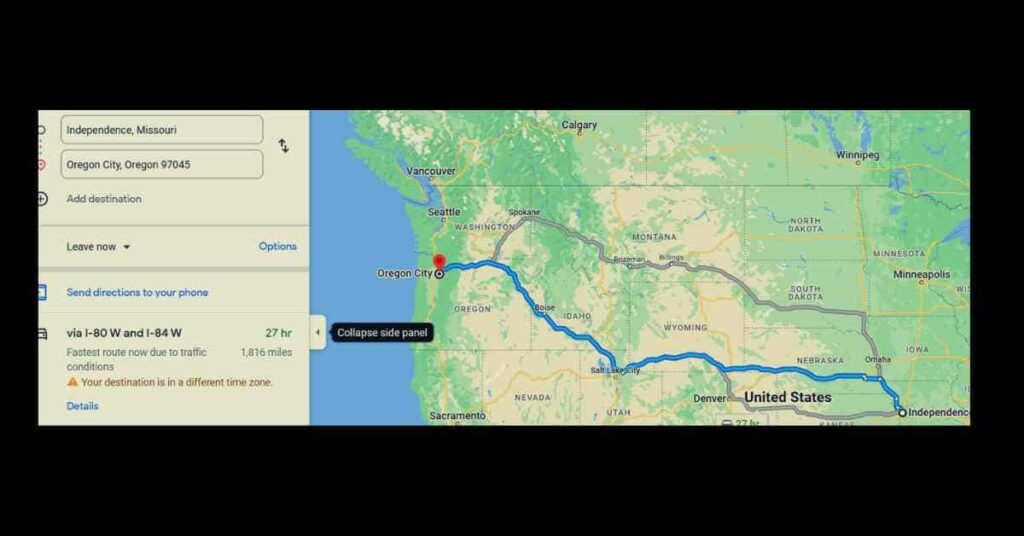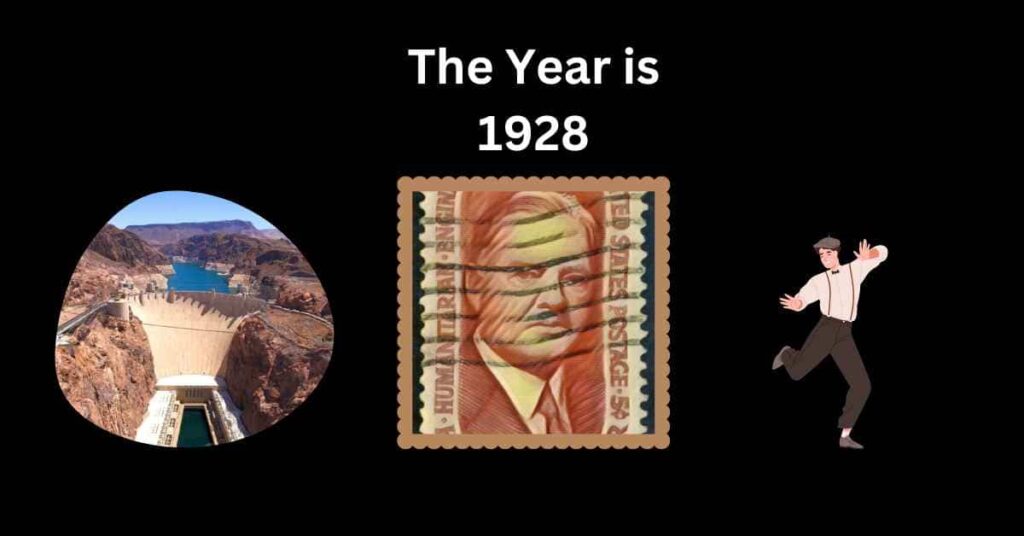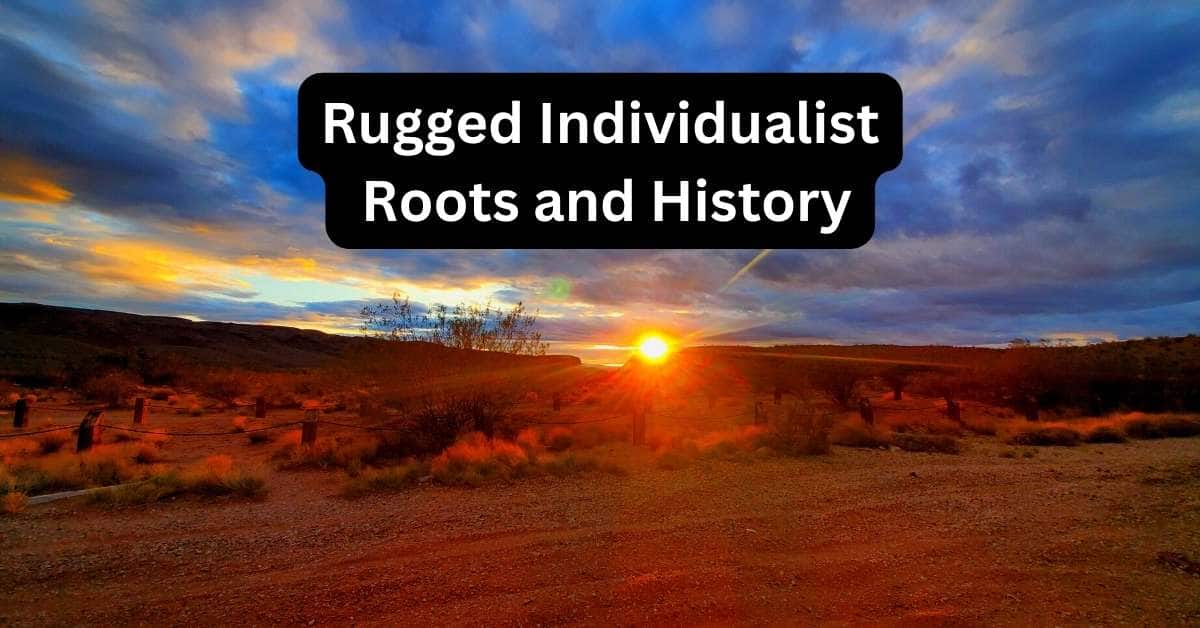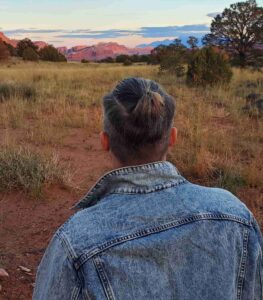Life is good with a cup of brew and a sunrise over the Grand Canyon. Wouldn’t you agree? Many cowboys and rugged individualists enjoyed it near a campfire. And the history associated with this identity enters into every American’s psyche.
Rugged individualism’s roots developed when the Pilgrims first landed at Plymouth Rock. Pioneers’ westward expansion accelerated its prominence in American culture. Cowboys, open plains, black coffee, and an untamed wilderness represent the core of frontier life.
Critics see rugged individualism as only an economic concept. Because self-reliance and independence define the culture. It is far more than that.
History and your upbringing shaped this American way of life. Saddle up! I’m taking you on an epic time-warp journey.
Historical Roots: From the Pilgrims to the 1850s
Here is your first movement toward America.
The First Movement to Freedom
Leaving the country with your family and your neighbors takes guts. You have your daily routines. Who wants to leave a familiar setting? I wouldn’t.
Pilgrims left for religious freedom in the early 17th century. Persecution motivates you to change from the status quo.
Cramming your family and minimal possessions into a small ship is never easy. Tough and rugged described the start of this adventure.
Once the anchor dropped offshore, the captain kicked you off and waved goodbye. All you have is:
- your family and other shipmates
- silent, wind whispering through the trees
- a vast, desolate unforgiving landscape
Simply put, you’re alone. Self-reliance with good intuition and a survival instinct are your best allies.
Europe included all your daily luxuries. Merchants shipped the finest wines and furniture there. And yet, no stores existed in North America when the Pilgrims arrived.
Sorry, driving to Wal-Mart for a quick toilet paper run didn’t exist.
Pilgrims came to America looking for a different life. They found it on the cold shores of New England.
American Revolution: Main Reason for Rugged Individualism
The start of an independent culture required a spark. Revolutionaries held the torch and waited until the right moment to light the fuse.
And they ignited it in 1776! What a magnificent sight!
From the Appalachian Mountains to the New England countryside, Patriots answered the call. They knew the main reason to come forth. Liberty and Freedom!
Great Britain would no longer terrorize the colonists.
Rumors of conflict whispered through the hidden hollows. And town criers read the fresh-inked Declaration of Independence.
Once the war ended, the following documents resulted due to the new movement:
- The Constitution
- The Federalist Papers
These American treasures further developed the main reason for the rugged individualist culture. Although it started small, the Founding Fathers fertilized the seed of independent culture. It grew into what you see today in the 21st century.
Furthermore, James Madison mentioned in Federalist #14 about a vast unexplored frontier. He alluded to future pretenses of an expanded rugged culture.
By the 1820s and 1830s, the revolutionary generation’s legacy is all that remained. Thomas Jefferson and John Adams both passed on July 4th, 1826. James Madison followed in 1836. His passing signaled the conclusion of the Founding Fathers’ rugged individualism era.
What happened next in the self-reliance saga?
Literally, a frontier peril awaited for the brave few to venture out for the challenge.

Heading West to the New Frontier: 1850s and Beyond
Origins of the Frontier
Heading west across the plains to the Pacific Ocean became the 1800s American Dream. The population grew due to all the opportunities the West offered such as:
- gold
- freedom
- new life
Popular culture dubbed this era in American history as the open Frontier. What glorified this westward expansion? How do you define it?
A frontier is a constantly changing border on civilization’s edge. It is where the sophisticated meets the wild. Society’s comforts disappear once you venture into the vast unknown.
Frontier Definition
Frederick Jackson Turner popularized the term “Frontier”. He wrote “Frontier Thesis” in 1893 and presented it to the American Historical Association.
Turner’s thesis emphasized what the Frontier represented:
- encouraged a love of wilderness and freedom
- formed a strong nationality
- promoted democracy
- created a definitive personality
Historians argue Turner’s thesis isn’t solid evidence of the rugged individual. In 1893 at the time of publication, no one knew what the rugged individual would become. However, Patriots today identify with the exact traits and characteristics Turner describes.
Today many other types of frontiers exist:
- Space as the “Last Frontier”
- Technological Frontier
- Medical Frontier
- Science Frontier
His thesis has modern relevance to the American psyche. Go tell the homesteader they aren’t tough for surviving on their own. It won’t go over well!
The Oregon Trail
The first wagon trains trekked across the dusty plains in 1843. And the frontier populations consisted of mostly men.
Women didn’t travel west in large numbers. Would you make the journey if you heard of all the danger?
Many of the hazards included:
- disease
- wild animals
- indigenous attacks
- limbs crushed beneath a wagon wheel
Someone needed to provide the necessary security crossing the Oregon Trail. The rugged individualist stepped up to the challenge.
At 2,170 miles, it took 4 to 5 months to complete the journey traveling at 15 to 20 mph. Below is a map of what it would take today to:

27 hours of driving time today is a lot better than months on dusty trails. If you wanted a challenge, this trail definitely satisfied that requirement.
The Cowboy- An Iconic American Hero
Old John Wayne and Clint Eastwood movies popularized this rugged individualism era. You think of them riding off into an epic western sunset.
Cowboys are this mystic romanticized part of American culture. They traveled everywhere on horseback. Think of the Lone Ranger.

They are the ones saving the day appearing at the height of danger. And these solo figures are the epic heroes of young Americans growing up in the 1950s to 1970s. Their selflessness is admirable.
Cooking your cast iron eggs over an open campfire appeals to your outdoor senses. You see the smoke and steam billowing through the sun lights’ first rays. I smell the aromas too.
In history, cattle drives between Texas and Kansas furthered the cowboys’ persona. Ranches such as the King Ranch became famous during this period. Most cowboys carried colt revolvers for protection along the trail. You never knew what problems would arise.
This period lasted from the 1850s until the late 1880s. Over 27 million heads of cattle reached the Kansas rail yards.
The invention of barbed wire in 1874 spelled doom for the 1,000-mile open-range cattle drives. Progress took its toll. The days of untamed freedom to ride soon ended.
Why herd the cattle and lose them when barbed wire kept them contained? Taking them to local yards would become the norm.
Self-Reliance and Rugged Individualist Related Articles:
• The cowboy is the representative of rugged individualism. LEARN MORE about the mentality of a rugged individualist.
• What helps makes communities more self-reliant like the ones on the Oregon Trail? LEARN MORE by reading self-reliant tips for community success.
The Homestead Act- Farming Rugged Individual
Do you feel comfortable in large crowds? Ever desired more space?
In the 1860s, the U.S. government incentivized folks wanting more freedom. We know this as the Homestead Act of 1862.
This act took public lands and privatized over 270 million acres. In other words, 10% of the U.S.’s landmass settled via this act.
The government promised you a 160-acre plot of land. Individuals 21 and up could participate.
Only 2 requirements existed for you to take advantage of this deal:
- Must be a U.S. citizen or plan on being one
- No intentions to fight against or aid enemies of the U.S.
Between the years 1860 and 1910, American farming tripled. And the homesteading rugged individualist identity started.
Homesteaders staked their lives on this notion of going West. If your farm failed, your isolation burdened you. You needed the characteristics of self-reliance and self-responsibility to survive.
However, by 1890, the U.S. Census Bureau officially closed the Frontier. I’ve read conflicting numbers on the population densities used to determine the end.
But as a general rule, they used less than 2 people per square mile.
Land claims sharply declined into the 1930s. The official end of the Homestead Act occurred in 1976. But the Alaskan Frontier included an exception ending the act in 1986.
Moreover, the farming era of rugged individualists continues today. You don’t have the Homestead Act and must buy your land.
Individualists want to:
- live away from the cities
- farm their own food due to questionable commercial farming practices
- be closer to nature
Here is a moving map from the U.S. Census Bureau showing the advancement of the western frontier.

Coining of the term “Rugged Individualism”- Herbert Hoover
Herbert Hoover- 1928 speech
“choice between the American system of rugged individualism and a European philosophy of diametrically opposed doctrines of paternalism and state socialism.”
Here is a link to the actual text of his speech- Herbert Hoover’s 1928 Speech.
Herbert Hoover coined the term “rugged individualism “in his 1928 speech. He sparked controversy by emphasizing rugged values. Yet, he instituted big government policies to ward off the Great Depression. Shanty towns known as “Hoovervilles” resulted and further worsened his infamous reputation.
In his 1928 speech, he expressed his sentiment for:
- liberty
- opposition to the European paternal government
- political equality, opportunity, and rights
All of these values represent the rugged individualists. You can’t deny that.
In response to World War I, the American government and bureaucracy grew. He justified the expansion by declaring the country would take necessary actions during wartime.
Hoover released a 72-page book called American Individualism in 1922. He discussed the traits and essentials of individualism. In theory, his speech and short book remained congruent until his presidency.
Does power change people? Do politicians change once in office?
Sadly, politicians don’t always follow through on their promises. And this is where Hoover’s biggest faults lie.
A year after his speech the Stock Market crashed in October 1929. His reputation followed the market’s downward trajectory.
Hoover’s resume showed he possessed the capabilities to handle this historic economic downturn. He earned his fortune because of his mining engineering genius.
Instead of allowing rugged individualists’ principles of limited government to prosper, he managed the problem with heavy hands.
His criticisms are:
- grew government making the way for Roosevelt’s New Deal
- raised taxes
- bribed companies about keeping high wage rates– Demand for the product fell and companies couldn’t pay wages
Hoover brought awareness to rugged individualism and recognized it as an American identity. But his approach to handling the Great Depression caused others to question his loyalty to individual principles.
Conclusion
I traced the roots of rugged individualism. It is an important part of U.S. history deserving recognition.
The Founders started the unofficial movement in 1776. At the time, no one knew the United States’ future. They wanted to survive the Revolutionary War. But the first rugged individuals responded to our country’s call for volunteers.
Gold rushes and rumors of a better life promoted the Oregon Trail’s use in the 1840s. Rugged individuals protected the wagon trains along the journey.
Cowboys are legendary self-reliant people. They want to be left alone to do their job.
In review, three distinct periods exist in this form of individualism:
- Founding Fathers
- Cowboy era
- Official recognition by Herbert Hoover’s coining “rugged individual”
All these developments provided the foundation to build a stronger rugged individualist culture. You and I want it because America needs it.
Do you consider yourself a rugged individualist? Do you rely on self-reliance?
J. Liberty
Important Articles to Explore:
• Are you curious how the rugged individualists culture fits into America? LEARN MORE about individualism and American culture.
• Rugged individualism, self-reliance, and Ralph Waldo Emerson’s essay “Self-Reliance” all connect. These started an American movement. LEARN MORE about this with my premiere post with individualism’s legacy of self-reliance in America.
References:
About the Homestead Act. (2022, October 12). Retrieved from the National Park Nebraska
Bazzi, S., Fiszbein, M., & Gebresilasse, M. (2020). Frontier Culture: The roots and Persistence of “Rugged Individualism” in the United States. Econometrica, 88(6), 2329-2368.
Davenport, D., & Lloyd, G. (2017). Rugged Individualism: Dead or Alive? Stanford: Hoover Institution Press.
Gidden’s Patent Application for Barbed Wire. (2017, October 11). Retrieved from the National Archies: Educator Resources.
Editors, H. (2022, August 10). Oregon Trail. Retrieved from History.
Homestead Act (1862). (2022, June 07). Retrieved from National Archives: Milestone Documents.
Schweikart, L., & Allen, M. (2004). A Patriot’s History of the United States. New York: Penguin Group.
Photo Credits
Photo Credits:
© raciro via canva.com
© kammccallister via canva.com
© Richard Davies via canva.com
© georgiamartin via canva.com



